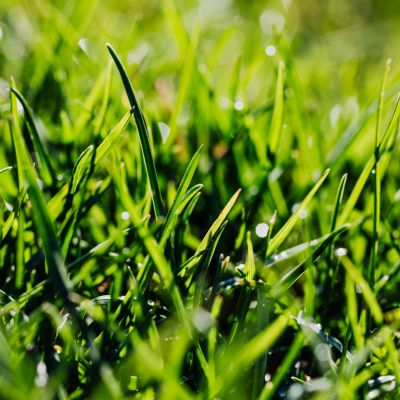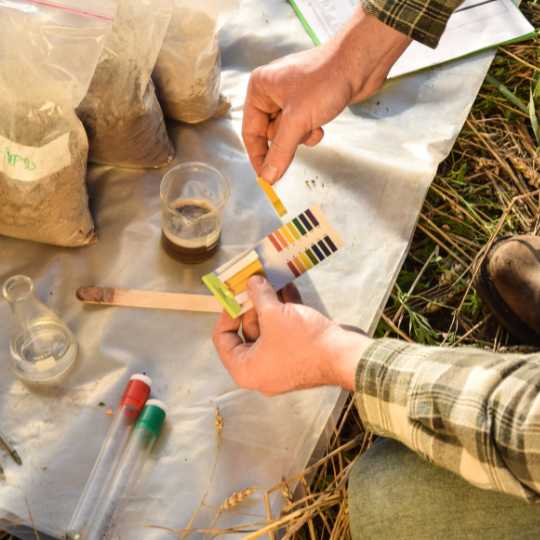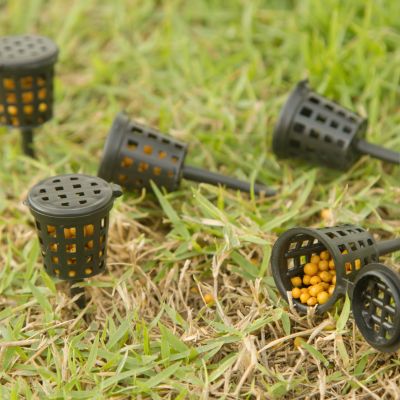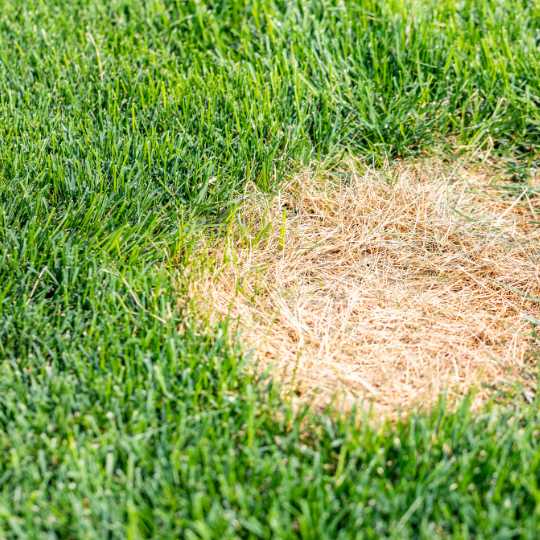Achieving a lush, vibrant lawn is the dream of every homeowner who takes pride in their outdoor space. However, turning that dream into reality requires more than just regular watering and mowing. Fertilizing your lawn is a crucial step in promoting maximum greenness and growth, providing the essential nutrients that grass needs to thrive. Whether you’re a seasoned gardener or a novice looking to elevate your lawn care game, mastering the art of fertilization is key to cultivating a verdant carpet of grass that will be the envy of the neighborhood. In this guide, we’ll delve into the context of how to fertilize lawns and the essentials of lawn fertilization, from understanding the different types of fertilizers to implementing a strategic fertilization schedule tailored to your lawn’s specific needs. With the right knowledge and approach, you can unlock the secrets to a lush, healthy lawn that will be the pride and joy of your outdoor oasis.
Benefits of Proper Lawn Fertilization
Maintaining a lush, green lawn requires more than just regular mowing and watering. How to fertilize lawns? Proper fertilization is key to ensuring your lawn receives the essential nutrients it needs to thrive. Not only does fertilization promote healthy grass growth, but it also enhances the overall appearance of your lawn, making it more resilient to pests, diseases, and environmental stressors. Moreover:
- Promotes healthy root development, leading to a stronger and more resilient lawn.
- Enhances grass color, creating a lush and vibrant green appearance.
- Increases grass density, reducing the risk of weeds taking over.
- Improves overall turf health, making it more resistant to pests and diseases.
- Boosts tolerance to environmental stressors such as drought and extreme temperatures.
- Encourages faster recovery from damage caused by foot traffic, pets, or other factors.
- Supports balanced growth, preventing excessive shoot growth that can result in thatch buildup.
- Contributes to a more uniform lawn texture and appearance, enhancing curb appeal.
Understanding Your Lawn’s Needs
Before you start fertilizing your lawn, it’s essential to understand its specific requirements. This involves conducting soil tests, understanding soil pH levels, identifying the grass type, and recognizing any nutrient deficiencies. Check out in detail:
Soil Testing: Importance and How to Do It
Soil testing is a crucial step in determining your soil’s nutrient levels and pH balance. You can either use DIY soil test kits or send samples to a professional laboratory for analysis. Based on the results, you can adjust your fertilization plan accordingly.
Understanding Soil pH and Nutrient Deficiencies
Soil pH plays a vital role in nutrient availability to plants. Most grasses prefer a slightly acidic soil pH, typically between 6.0 and 7.0. Understanding nutrient deficiencies, such as nitrogen, phosphorus, and potassium, allows you to select the right fertilizer to address these needs.
Identifying Grass Type and Its Specific Nutrient Requirements
Identifying the type of grass in your lawn is essential for tailoring your fertilization approach to meet its specific needs. Warm-season grasses like Bermuda, Zoysia, St. Augustine, and Centipede have different characteristics and growth patterns from cool-season varieties such as Kentucky bluegrass, perennial ryegrass, fine fescue, and tall fescue. Visual cues like blade texture, color, and growth habits can aid in identification.
Additionally, conducting a soil test provides valuable insights into nutrient levels and pH, guiding fertilizer selection and application rates. By understanding your grass type and its unique requirements, you can ensure targeted and effective fertilization, promoting lush and healthy turf growth year-round.
Choosing the Right Fertilizer
Selecting the appropriate fertilizer involves considering factors such as the type of fertilizer, N-P-K ratios, release mechanisms, and your lawn’s requirements. Let’s explore in detail:
Types of Fertilizers (Organic Vs. Synthetic)
You can choose between organic and synthetic fertilizers, each with its advantages and disadvantages. Organic fertilizers are derived from natural sources and promote long-term soil health, while synthetic fertilizers offer quick nutrient availability and precise nutrient control.
Understanding N-P-K Ratios
The N-P-K ratio on fertilizer labels indicates the percentage of Nitrogen (N), Phosphorus (P), and Potassium (K) present in the product. Different ratios cater to specific lawn needs, such as promoting leaf growth (high nitrogen), root development (high phosphorus), or overall health and stress resistance (balanced ratios).
Slow-Release Vs. Quick-Release Fertilizers
Slow-release fertilizers provide nutrients gradually over an extended period, promoting sustained growth and reducing the risk of nutrient runoff. Quick-release fertilizers deliver nutrients rapidly but may require more frequent applications.
Selecting the Appropriate Fertilizer for Your Lawn’s Needs
When choosing the right fertilizer for your lawn, consider factors such as nutrient ratio, soil test results, types of grass, release rate, additional features, and environmental impact. Tailoring your fertilizer selection to meet your lawn’s specific needs ensures optimal nutrient provision for healthy growth while minimizing environmental harm. Whether it’s promoting lush greenery, encouraging root development, or addressing specific issues like weed control, selecting the appropriate fertilizer contributes to a vibrant and thriving lawn.
Timing and Frequency of Application
Applying fertilizer at the right time and frequency is essential for maximizing its effectiveness and minimizing potential harm to the environment. So, for more information, just scroll down:
Seasonal Fertilization Schedule
A well-planned seasonal fertilization schedule is vital for nurturing a thriving lawn year-round. In spring, kickstart growth with nitrogen-rich fertilizer to recover from winter dormancy; transition to a balanced, slow-release formula in summer to sustain health amidst heat stress. As temperatures cool in fall, prioritize root development with a phosphorus-heavy fertilizer for winter resilience. Adapt fertilization timing and formulations based on soil tests, ensuring optimal nutrient uptake and maintaining a vibrant, resilient lawn through changing seasons.
Best Times of Day and Weather Conditions for Application
The best times for fertilizer application are early morning or late afternoon when temperatures are cooler, typically between 60-80°F (15-27°C), and winds are calm to minimize nutrient drift. Avoid applying during peak sunlight hours to prevent scorching the grass and ensure maximum absorption of nutrients. Additionally, aim for dry weather conditions to prevent fertilizer runoff and promote even distribution across the lawn.
Frequency of Application Based on Grass Type and Climate
The frequency of fertilizer application varies based on grass type and climate conditions. In general, warm-season grasses like Bermuda and Zoysia require more frequent fertilization, typically every 6-8 weeks during their active growing season in warmer climates. Cool-season grasses such as Kentucky bluegrass and tall fescue may need less frequent fertilization, typically every 8-10 weeks, especially in cooler climates. However, adjustments may be necessary based on factors like soil quality, rainfall, and lawn health. Regular monitoring and soil testing can help determine the optimal timing and frequency of fertilizer application to ensure healthy growth and vibrant turf.

Proper Application Techniques
Did you get your answer to the question of how to fertilize a lawn? Proper application techniques are crucial for maximizing the effectiveness of fertilizer and minimizing environmental impact. Start by calibrating your spreader to ensure accurate coverage and avoid over or under-application. Apply fertilizer evenly using a crisscross pattern to prevent streaks and missed areas. Keep a safe distance from water bodies to prevent runoff, and sweep up any spills or excess fertilizer on hard surfaces to prevent contamination. Continue:
Equipment Needed for Application
Invest in quality spreading equipment, such as broadcast or drop spreaders, to ensure accurate and uniform fertilizer distribution across your lawn.
Spreading Techniques for Even Coverage
Follow proper spreading techniques to achieve even coverage, overlapping slightly with each pass to avoid striping or uneven growth patterns.
Tips for Avoiding Fertilizer Burn
Prevent fertilizer burn by carefully following application instructions, avoiding over-application, and watering your lawn immediately after fertilizing to help nutrients penetrate the soil.
Watering and Maintenance After Application
Watering and maintenance after fertilizer application are essential to ensure optimal nutrient uptake and minimize potential risks. After applying fertilizer, water the lawn lightly to help the nutrients penetrate the soil. Aim for about 0.25 to 0.5 inches of water, enough to moisten the soil without causing runoff. It’s best to water in the early morning or late afternoon to reduce water loss through evaporation. Avoid heavy watering immediately after application, as it can leach nutrients away from the root zone or cause them to run off into water bodies.
Importance of Watering After Fertilization
Water your lawn thoroughly after fertilizing to help nutrients penetrate the soil and prevent potential burns. Deep watering encourages root growth and nutrient uptake.
Guidelines for Watering to Maximize Effectiveness
To maximize watering effectiveness, aim to water early in the morning to minimize evaporation and allow the grass to dry before nightfall, reducing disease risk. Water deeply and infrequently, providing about 1-1.5 inches of water per week, including rainfall, to encourage deep root growth and drought resistance. Ensure uniform coverage with sprinklers or irrigation systems, monitor soil moisture levels regularly, and watering when the top inch of soil feels dry. Prioritize conservation efforts such as rainwater collection and mulching to optimize water usage while promoting healthy lawn growth and vitality.
Additional Maintenance Practices to Support Fertilization Results
Incorporate regular maintenance practices such as mowing at the correct height, aerating, and overseeding to complement fertilization efforts and maintain a healthy, vibrant lawn.
Troubleshooting Common Issues
Identify and address common lawn fertilization problems to prevent further damage and promote optimal growth. Be active for the following common issues:
Recognizing Signs of Over-Fertilization or Under-Fertilization
Monitor your lawn for signs of nutrient imbalances, such as yellowing or stunted growth (under-fertilization) or excessive thatch buildup and scorched patches (over-fertilization).
Dealing with Nutrient Imbalances
Adjust your fertilization regimen or supplement with targeted nutrient treatments to address specific deficiencies or excesses identified through soil testing.
Addressing Other Lawn Health Problems Related to Fertilization
Be vigilant for signs of pests, diseases, or environmental stressors that may affect your lawn’s health, and take appropriate measures to mitigate these issues in conjunction with proper fertilization practices.
Eco-Friendly Fertilization Practices
Promote sustainable lawn care practices that minimize environmental impact while maintaining a healthy, green lawn. Like:
Using Natural Alternatives to Traditional Fertilizers
Explore organic alternatives such as compost, manure, or natural amendments to nourish your lawn without the use of synthetic chemicals.
Implementing Sustainable Lawn Care Practices
To create a more resilient and environmentally friendly lawn ecosystem, practice water conservation, reduce chemical inputs, and encourage biodiversity.
Minimizing Environmental Impact While Promoting Lawn Health
Choose eco-friendly fertilizers, follow responsible application practices, and adopt integrated pest management strategies to minimize pollution and protect local ecosystems.
Final Thoughts
By understanding your lawn’s needs, choosing the right fertilizer, and implementing proper application and maintenance techniques, you can achieve maximum greenness and growth while promoting your lawn’s long-term health and sustainability. Prioritize eco-friendly practices to create a beautiful, vibrant lawn that benefits both your property and the environment, fostering a harmonious balance between aesthetics and ecological responsibility.
How to Fertilize Lawn FAQs
How Often to Fertilize Lawns?
The frequency of lawn fertilization depends on factors like grass type, climate, and soil condition. Generally, warm-season grasses should be fertilized every 6-8 weeks during their active growing season and cool-season grasses every 8-10 weeks.
How to Apply Fertilizer to Lawn?
When applying fertilizer to the lawn, use a spreader set to the recommended application rate to ensure even coverage. Apply in a crisscross pattern to prevent streaks and missed areas. Water the lawn lightly after application to help nutrients penetrate the soil. If you need experts, take an assist with our fertilization services.
How Often Do You Need to Fertilize Your Lawn?
The frequency of lawn fertilization varies based on factors such as grass type, climate, and soil condition. Warm-season grasses typically require more frequent fertilization every 6-8 weeks during their active growing season, while cool-season grasses may need fertilization every 8-10 weeks.
How and When to Fertilize Lawn?
Fertilize the lawn in early spring to kickstart growth, in summer to sustain health amidst heat stress, in fall to promote root development for winter resilience, and in late fall or early winter for regions with year-round growth. Apply fertilizer evenly using a spreader, water lightly after application, and avoid mowing for a couple of days.
What Is the Best Way to Fertilize a Lawn?
The best way to fertilize a lawn is to follow a seasonal fertilization schedule tailored to your grass type and climate conditions. Use a spreader for even application, water lightly afterward to help nutrients penetrate the soil, and avoid mowing immediately after fertilizing. Regular soil testing and adherence to manufacturer instructions ensure effective and responsible fertilization practices.










